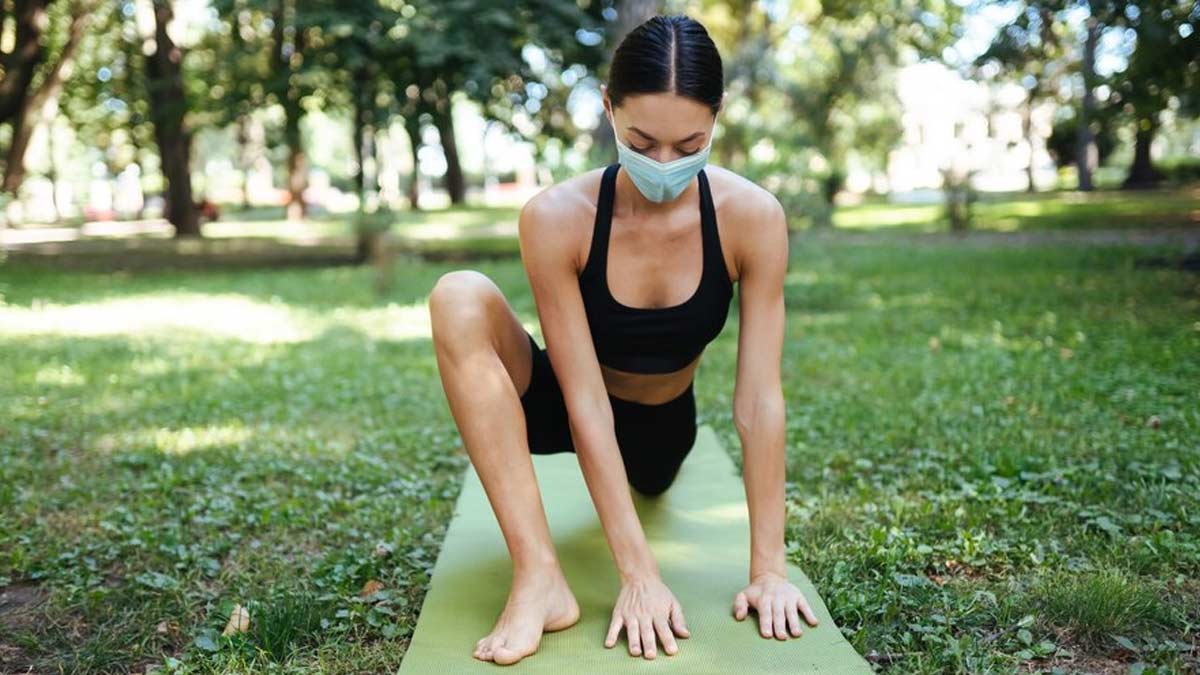
Exercise at home has its own level of comfort. You can go at your own pace, wear whatever you like, and even rest when your body demands it. Moreover, you don't need fancy shoes or sneakers to sweat. While they do provide support and reduce your risk of injury, if you’re exploring mild workouts and indulging in low-impact exercises, you can even train barefoot, with no one really there to judge your training etiquette. Plus, it has several perks that you may want to look into, but before you explore that, there are a few things you need to know and consider.
Table of Content:-
Also Read: Weak Pelvic Floor Can Be Strengthened With THESE 5 Effective Exercises
Pros And Cons Of Barefoot Exercises

Whether you should exercise barefoot or with shoes on depends entirely on the kind of workout you do. In certain cases, other factors, such as a previous injury or pre-existing foot conditions, are also considered.
Therefore, barefoot exercise can have both pros and cons, says Dr Manoj Kumar, Orthopaedic Surgeon, CARE Hospitals, Banjara Hills, Hyderabad. These include:
Pros:
Improved proprioception: Barefoot workouts can enhance your body's awareness of its position and movement, leading to better balance and coordination.
Strengthening foot muscles: According to Dr Kumar, exercising barefoot can help strengthen the muscles in your feet and ankles, which may reduce the risk of injury. In fact, a study published in the journal Medicine and Science in Sports and Exercise suggested that not wearing shoes while exercising can be as effective as exercises for strengthening foot muscles.
Better form: Being barefoot allows your feet to move more naturally, potentially leading to better alignment and form during exercises like squats and lunges.
Cons:
Increased risk of injury: Exercising barefoot can expose your feet to potential hazards such as sharp objects or uneven surfaces, increasing the risk of cuts, bruises, or sprains.
Lack of support: Shoes provide cushioning and support, which can help absorb shock and reduce stress on your joints during high-impact activities.
Hygiene concerns: Barefoot workouts in shared spaces like gyms or studios may raise concerns about hygiene and the spread of foot-related infections.
Should Some People Avoid Exercising Barefoot?

Although there can be some health benefits to exercising barefoot, Dr Sharma says it should be avoided by individuals who have foot conditions. This includes people with an injury, plantar fasciitis, arch problems, flat feet, or active pain in the foot.
“People with such conditions are recommended to wait until recovery to exercise barefoot,” he advises.
Additionally, individuals diagnosed with diabetes should also avoid barefoot exercise. This is because the condition may reduce neuropathy in the feet and contribute to less blood flow, which increases the risk of injury to the foot, the doctor explains, adding that diabetic individuals are more prone to developing infection when exposed to cuts or blisters.
Moreover, people who have undergone recent surgery or experienced injuries in lower limb areas like the ankle, hip, or knee should refrain from exercising barefoot, as it can put unwanted stress on such areas.
Also Read: Study Finds Moderate Or Vigorous Exercise May Boost Heart Health
Tips For Working Out Barefoot

If you’re a healthy individual or do not have any pre-existing health conditions, here are some things to keep in mind if you exercise barefoot:
- Avoid choosing environments with uneven surfaces or sharp objects.
- Start with light balance exercises to build balance and maintain equilibrium before moving on to intense exercise.
- Take it slow; it is not recommended to quickly shift from exercising with footwear to going barefoot.
- If you are experiencing any pain after a workout, immediately seek the attention of a medical professional.
- Refrain from putting unnecessary stress on the body; this may lead to injury.
- Do not neglect foot hygiene, as barefoot exercises result in higher exposure to germs, dirt, etc. Practise proper cleaning of your feet after workouts.
- Do some warm-up exercises, as they will support your foot muscles before a high-impact workout.
Conclusion
Exercising barefoot is completely up to the individual. While it can provide various health benefits, one must take into account the disadvantages. In addition, it is also necessary to assess your health condition, particularly your foot condition, before delving into barefoot training. Ensure that you take the necessary hygiene measures and also choose environments that are safe and clean.
Also watch this video
Read Next
Disha Patani Sets Monday Fitness Goals With Perfect Backflips; Here’s Why You Should Do It Too
How we keep this article up to date:
We work with experts and keep a close eye on the latest in health and wellness. Whenever there is a new research or helpful information, we update our articles with accurate and useful advice.
Current Version